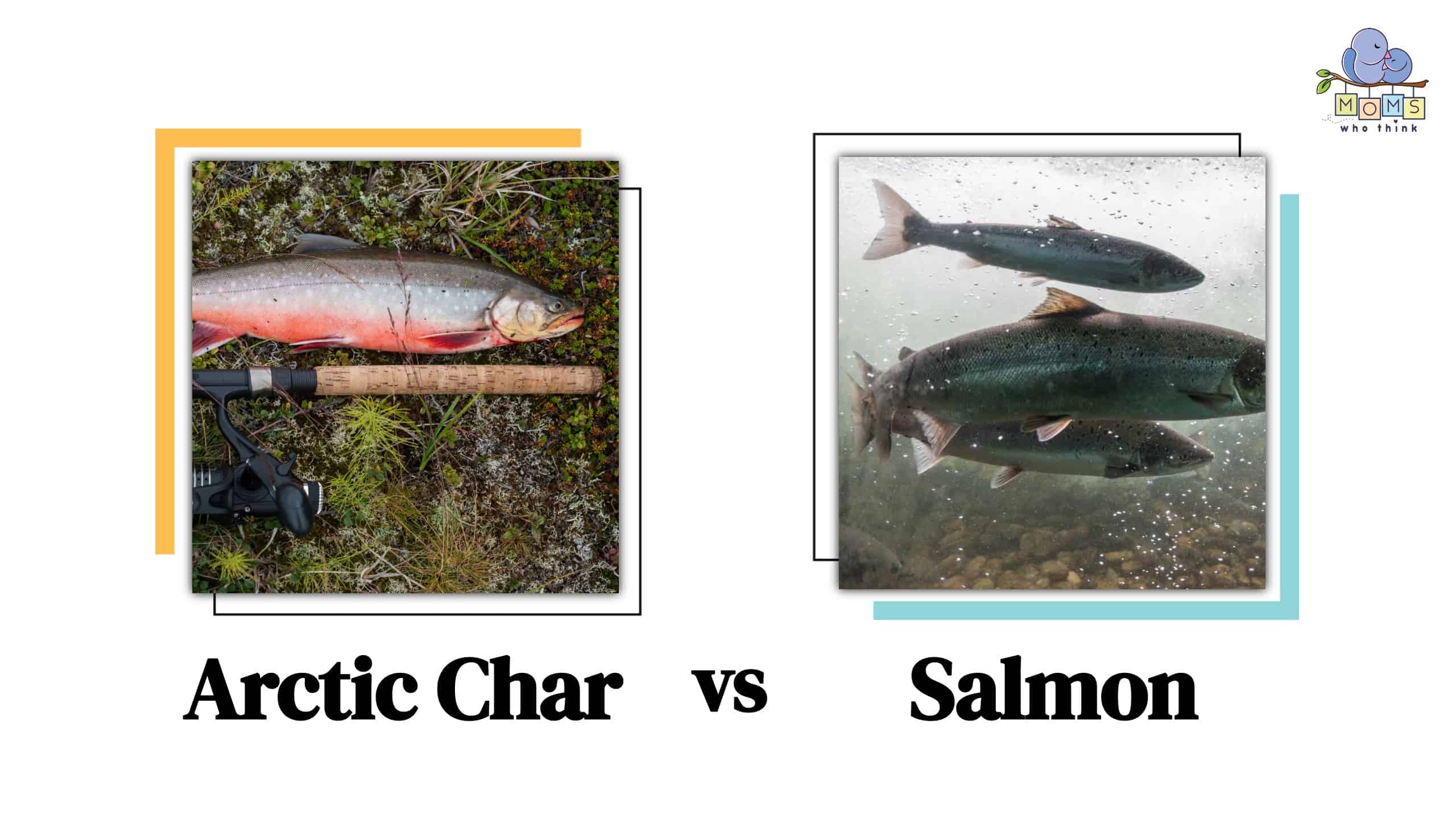Arctic char and salmon are among the most widely consumed fish globally. Buyers often confuse them because of their similarities, like being big freshwater fish that taste great. They have few differences that help distinguish them; hence they are far from the same.
From the outward appearance, Arctic char has spots ranging from light pink, white, or red during the different seasons. As for salmon, it has brown or dark green spots, which make it quite noticeable.
This article compares both fish and highlights everything about them, from nutrition to cooking.
- The must-have convenient reference guide for every home cook!
- Includes more than 8,000 substitutions for ingredients, cookware, and techniques.
- Save time and money on by avoiding trips to grab that "missing" ingredient you don't really need.
Arctic Char vs. Salmon: How Do They Compare?
Arctic char and salmon have several differences, both as fish and food. Salmon and char have similar habitats. Though initially from freshwater areas, they migrate between those waters and salty water. Arctic char gets its name from making its home in the ‘Arctic.' It thrives in the Nothern parts of Europe, North America, and Russia, basically cold regions. Salmon fish is popular in Alaska, the Great Lakes, and the west coast of Canada.
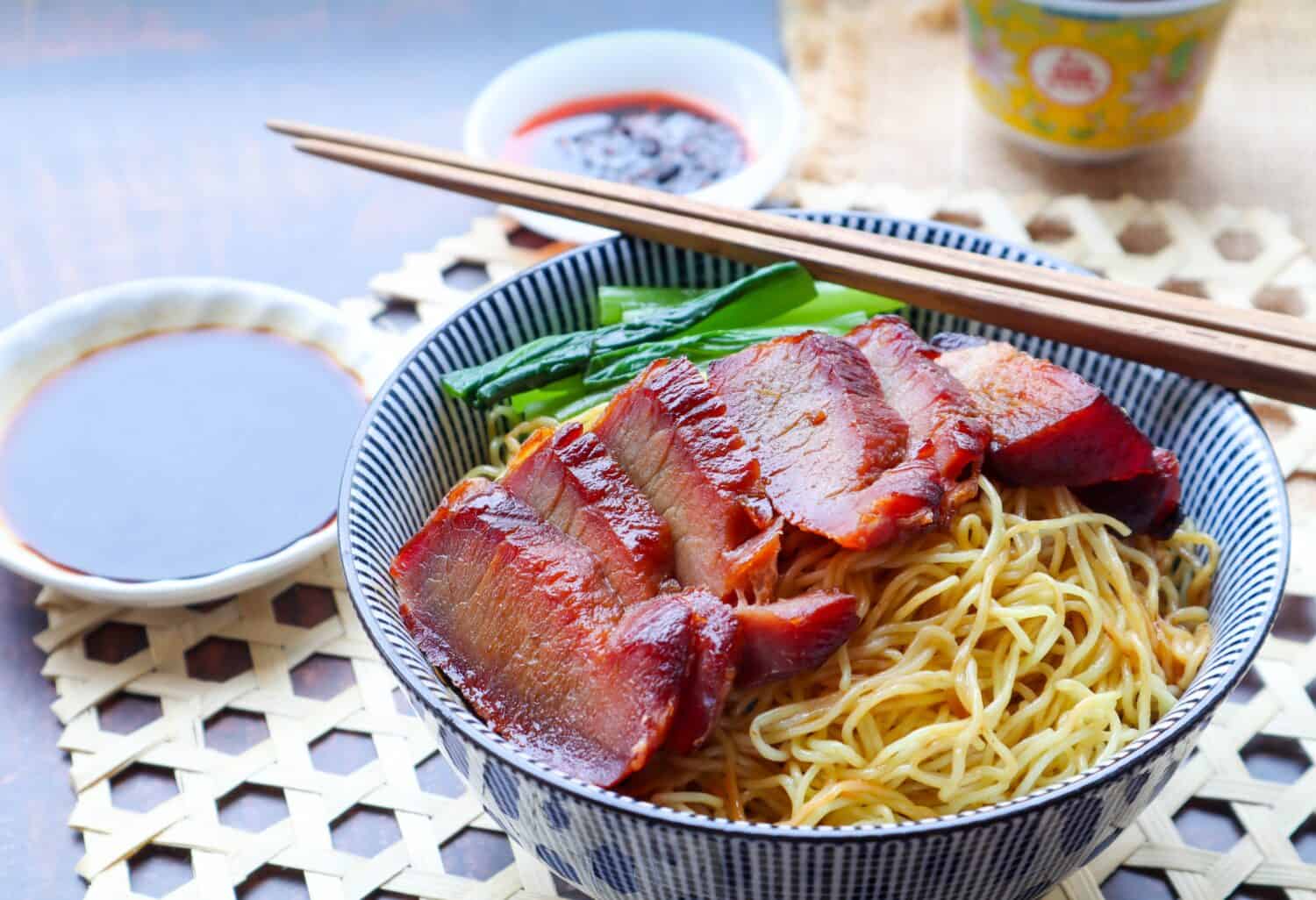
Both Arctic char and salmon are delicious, nutritious sources of protein.
©Be Saowaluck/Shutterstock.com
For those who are familiar with these fish, it's pretty easy to identify them. However, the challenge comes for first-time buyers with no idea how each looks. A look at their spots is the quickest way to tell them apart. Artic char have light sites for most of the year, which can be pink or white. Sometimes they are bright red during spawning time. Another characteristic of the char fish is the creamy white edge on its fins which salmon does not have. Salmon is known for its dark spots, which can be brown or green. It is common to find salmon without these dark areas, but most have them, and that's their most significant differentiator.
Taste is a significant comparison factor regarding Artic char and salmon as food. Char is very similar to salmon but also to trout fish. So, its mild flavor ranges between the two fish and more towards trout. The mild flavor allows you to add spice without overpowering the initial taste.
Artic char is quite fatty; hence it becomes soft when cooked, but the delicate skin crisps up nicely. It's an excellent choice when looking for a milder fish option. Salmon has a stronger flavor than Artic char. It also has more fat, making the taste richer and the texture moist and soft.
Artic Char vs. Salmon: How Do Their Nutrients Compare?
Their nutrients are not far off, but salmon has a higher protein and Omega-3 fatty acids percentage than Artic char.
Artic Char – Nutritional Value
It's a great source of Omega-3 fatty acids, which help with brain and heart growth. Fish is a good source of protein, and this type isn't different. Arctic char's high protein levels help to build and repair body muscles and tissues. It also has vitamin D and calcium in high amounts. Ideally, the skin manufactures vitamin D, but the percentage in char meat is more significant, thus benefiting the bones more.
As mentioned earlier, Artic char is found in the cold Nothern areas, which receive less sunlight during winter. The availability of fish helps the body keep up with its vitamin D needs to stay healthy. That is why people in those areas are fond of this type of fish, their primary protein source.
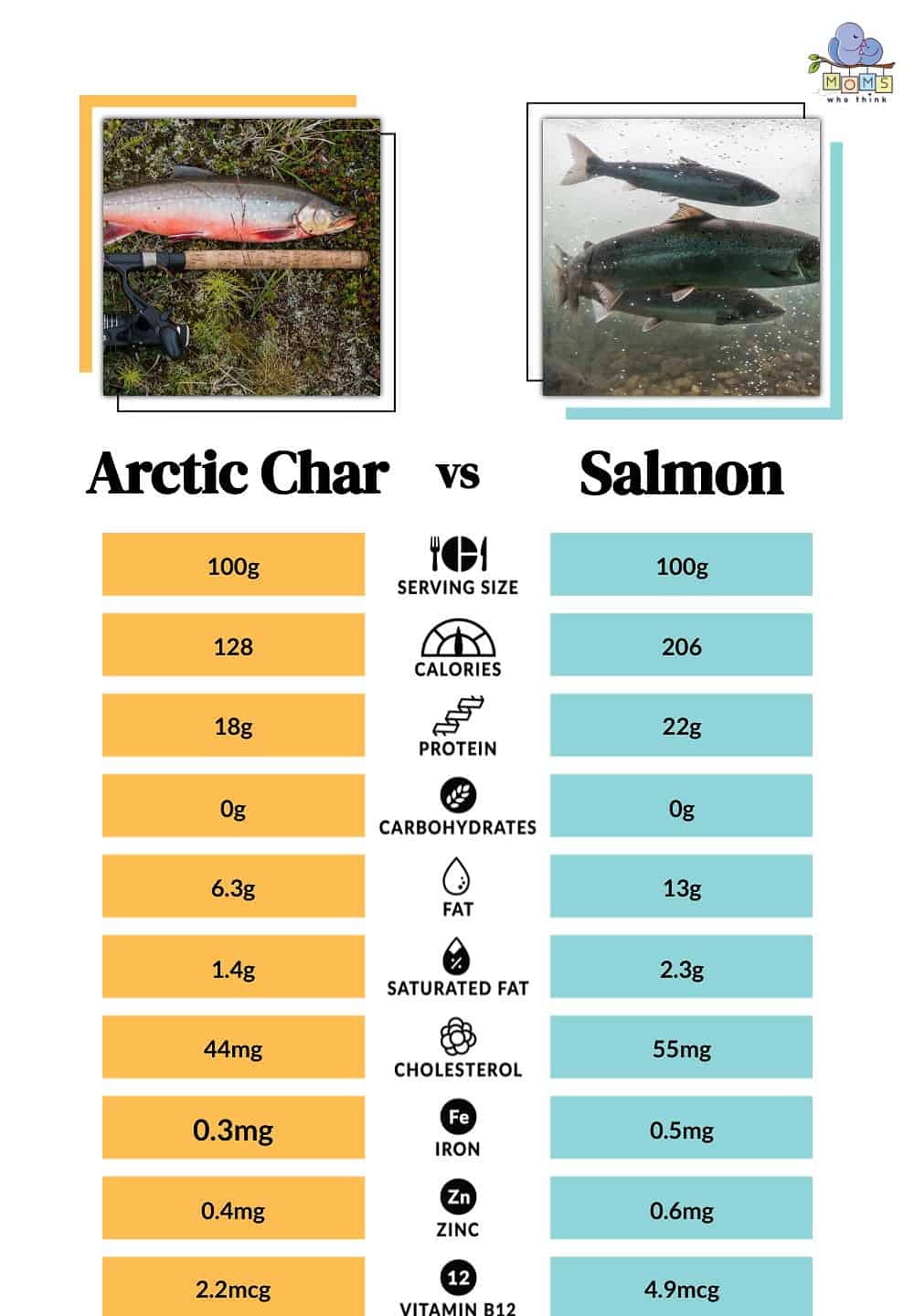
Salmon – Nutritional Value
Similar to Artic char, salmon has plenty of Omega-3 fatty acids. Some of these fatty acids are necessary since the body cannot produce any of them at all. They suit skin, joints, heart health, and hormonal balance. Omega-3 fatty acids help prevent conditions like heart disease, dementia, cancer, high blood pressure, rheumatoid arthritis, muscular degeneration, etc., which can weigh you down. Salmon is known for its protein and vitamin B12, which help manufacture blood cells and DNA.
About Artic Char
Artic char is a freshwater fish that occasionally moves to salty waters. It's related to the salmon and is tout in size but with a different texture and flavor. Char is expected in the Artic or cold Nothern waters of Europe, Northern America, and Russia. It has light pink, white, or red specs depending on the season and feeding time. Cooks love it for its delicate texture and the oiliness that makes it easier to cook than other fish like trout. Artic char is not readily available and is very expensive compared to other fish. Some regions have begun char farming to increase its availability in the market.
About Salmon
Salmon is a freshwater fish that lives in salty water but later returns to the fresh water. It is common in North Atlantic and Pacific and the Great Lakes in North and South America. Sometimes, salmon has a shimmery silver look, but it's known for its dark brown or green spots. Several salmon variations exist, like the Pink, Chinook, Coho, Red, Salmo salar, and Silverbrite salmon.
Salmon is a popular fish worldwide. The quality of its flesh, ease of getting it, and abundance are reasons why people love it. The fish has a more intense flavor than Artic char. It's also quite oily, which helps soften it and enhance its taste.
- The must-have convenient reference guide for every home cook!
- Includes more than 8,000 substitutions for ingredients, cookware, and techniques.
- Save time and money on by avoiding trips to grab that "missing" ingredient you don't really need.
How to Cook Arctic Char and Salmon
Fish is one of those foods you want to be very careful when preparing. It can easily overcook or dry up. One advantage of Arctic char and Salmon is the oil content in them. They have a lot of oil which keeps them moist even if they overcook. Artic char is versatile when it comes to cooking. The mild flavor allows you to add spices and seasoning and prepare it by sauteeing, grilling, baking, pan frying, etc. Pan-fried char with squeezed lemon juice is usually so tasty! A touch of marinara sauce or rich buttery sauce also makes it even more delicious.
Many individuals are familiar with salmon and even how to prepare it. Its cooking doesn't vary much from Arctic char and is also very versatile. Salmon generally has a rich flavor, but it depends on the species. The taste ranges from mild to intense, so choose spices that work well with the particular kind. If you dislike the strong ‘fish' smell, salmon is not the fish for you. The smell can be a turn-off when cooking, but once ready to eat, it's very minimal. Salmon is ideal for various recipes. You can fry salmon like steak, add it to pasta as small cubes, use as filling in things like tacos, or mince it into fish balls or potato cake.
Arctic Char vs. Salmon: Sustainability
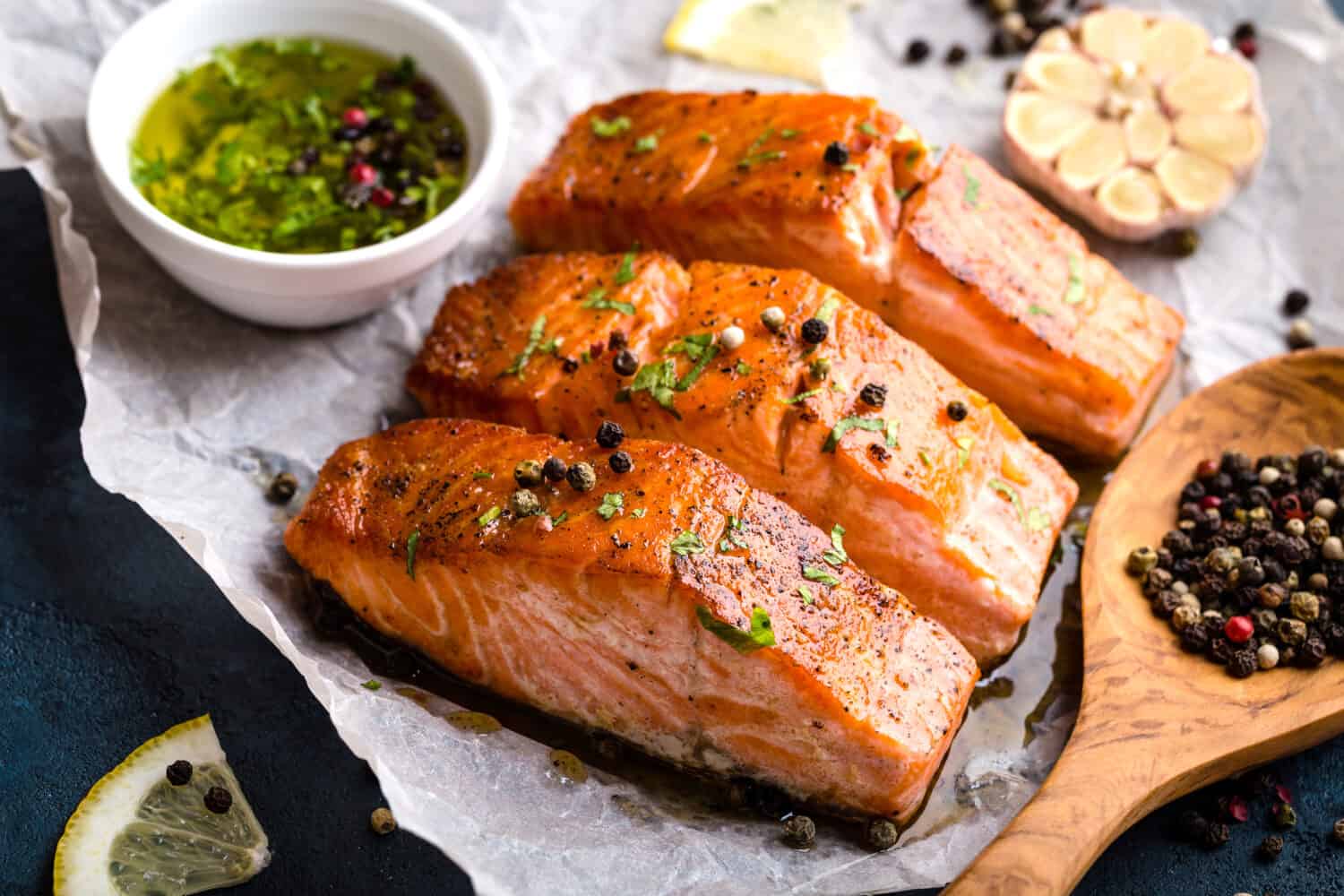
Salmon possesses a strong ‘fish' smell that disappears once the meat is ready to eat.
©Elena Eryomenko/Shutterstock.com
Initially, Arctic char and salmon were caught wild in the open seas. Nowadays, most of the bulk comes from farming. Arctic char lasts longer in freshwater, so it's easier to farm, but only 3,000 metric tons are available yearly.
Salmon production has been sustainable for years, with almost 750,000 metric tons available yearly to buyers. However, this is slowly declining due to pollution and overfishing. Also, salmon require wild fish to feed on, which is proving difficult to sustain, and their Omega-3 fatty acid level is declining. On the other hand, Arctic char production is rising steadily because of improved farming technology.
Arctic Char vs. Salmon: Buying
It is easier to find salmon than Arctic char in your local market. The availability or lack of it affects the fish cost, which is why salmon is cheaper than char. The price difference can affect your cooking, especially if you prefer char to salmon. Whether you are getting salmon or char, ensure the fish is fresh, with no foul odors. Always note the look of each fish before buying. Salmon is plain silver or with brown and dark green spots, while Arctic char is light pink, white, or red.
Conclusion
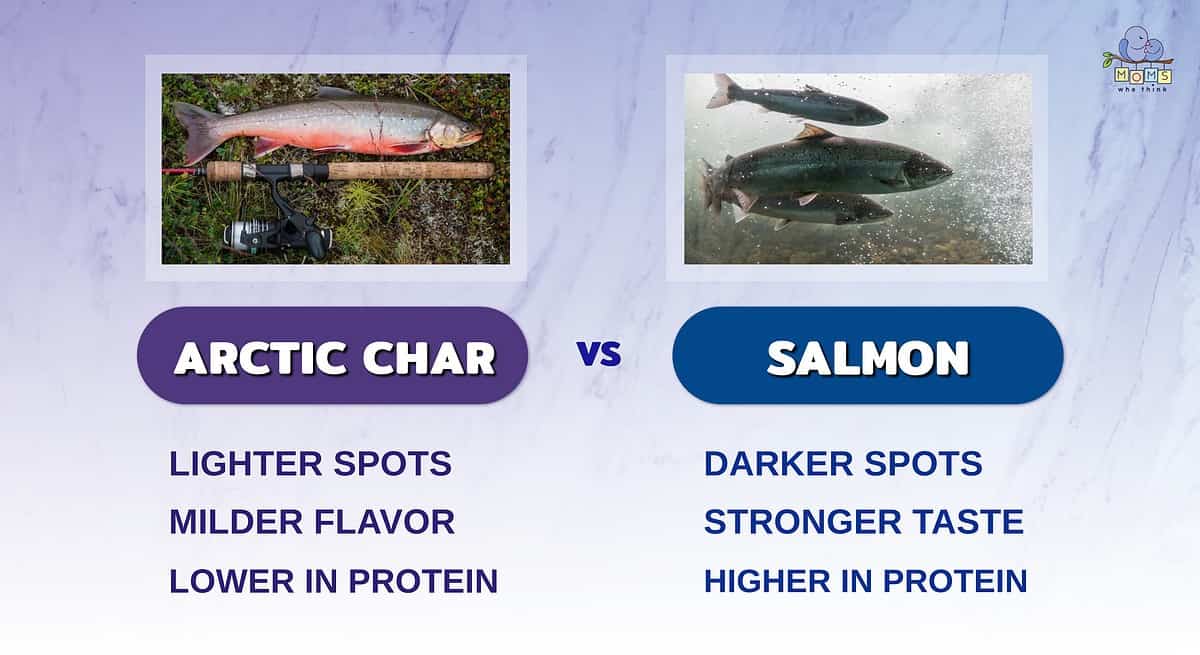
Arctic char and salmon are healthy fishes with many vitamins and minerals. While these two fish have quite a few similarities, they also have many differences. Here are a few of those distinctions that we just in this article:
- For the most part, salmon is moderately less expensive than Arctic char, primarily due to its wide availability.
- Regarding taste, Arctic char has a milder flavor, whereas salmon has a stronger, fishier taste.
- For visual purposes, arctic charm is known to have light pink, white, or red spots. Salmon, on the other hand, has darker brown or green spots.
Arctic char and Salmon are freshwater fish. Though salmon is more popular, both have great nutritional value and are very easy to prepare. Arctic char is more expensive, but it is a good recommendation for your recipes. The taste and texture allow for creativity and different cooking methods. Salmon also has fantastic flavor and texture. Both fish are delicious, and you won't be disappointed by any of them.
A Great Salmon Recipe
PrintLemon Crusted Salmon with Citrus Herb Sauce Recipe
- Total Time: 25 minutes
Ingredients
4 salmon fillets (about 5 ounces each)
4 teaspoons lemon and herb seasoning
1 cup orange juice
1 tablespoon chopped fresh thyme
1 teaspoon dried oregano
Instructions
- Preheat the oven to 375°. Coat a baking sheet with cooking spray.
- Season both sides of the salmon with salt, pepper, and the lemon and herb seasoning. Place the salmon on the prepared baking sheet and bake for 12 to 15 minutes, until the salmon is fork-tender.
- Meanwhile, whisk together the orange juice, thyme, and oregano in a small saucepan over medium heat. Bring to a simmer and cook for 10 minutes, until the sauce reduces slightly. Serve the salmon with the orange sauce spooned over the top.
- Prep Time: 10 minutes
- Cook Time: 15 minutes
